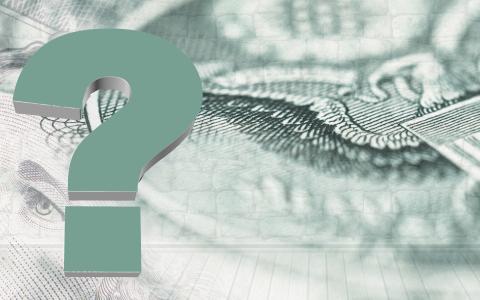
(Yahoo! Finance) - After sampling an economic cocktail of inflation and slowing growth stirred up first by tariff uncertainty and now by actual tariffs, hints of another unsavory concept are wafting through: stagflation.
The Wall Street Journal is talking about it. Bloomberg is talking about it. And so is CNBC. Even bringing up the word is an indicator in and of itself, feeding a cycle of expectations and altered behavior.
Fresh data flashing weakness has reinforced the souring perception of the economy: Companies have eased up on hiring, and manufacturing activity has slowed. Commentary and modeling from market observers have also taken a turn. A risk of recession is back in the conversation. And Wall Street, fresh off the president’s joint address to Congress, is eying S&P 5,500 as well as S&P 6,000.
Stagflation's ominous specter — of lifeless growth and higher prices — is especially concerning because of the limited range of tools available to wrangle it. And as Apollo (our parent company's parent company) chief economist Torsten Sløk pointed out in a note to clients, "A trade war, by definition, is a stagflation shock: Higher prices and lower sales."
In the later phase of the Biden era, the Federal Reserve implemented generationally high rates in an effort to trample inflation. And to the delight of investors, it finally cut them at the end of last year, not as a rescue raft, but in the face of a resilient economy that had stayed solid as inflation moderated — a textbook soft landing.
In the new Trump context, Wall Street sees rate cuts arriving not with applause for vanquished inflation, but as a salve to reverse an economic slowdown and stave off a deteriorating labor market.
What, then, about nagging inflation, nagging even more as companies raise prices due to tariffs?
The Fed has delayed rate cuts this year because price increases aren't slowing fast enough. Chair Jerome Powell’s dual mandate is to maintain maximum employment and keep prices stable. But the stagflation brought on by tariffs — higher costs, fewer jobs — puts the Fed in a jam. The next round of cuts might ease the potential growth problem while exacerbating the pricing one.
Trump's second electoral victory primed the American electorate to connect pricing pressures with political leadership. Will relief come from the White House?
The president's economic advisers have already suggested that some sort of tariff compromise with Mexico and Canada could arrive soon. But Trump made plain during his speech that he will implement a whole new array of tariffs next month on friend and foe alike. The tariffs may go, but tariff uncertainty isn't going anywhere.
The nebulous goal seems to be a full rewrite of US participation in global trade to make "America rich again." Even if, as Trump said, "There'll be a little disturbance," noting that "we're okay with that."
For investors eyeing a Fed likely fighting with one hand tied behind its back and a White House promising disruption, where should investor optimism come from? The confusion and uncertainty around US tariff policy might worsen, feeding into expectations of higher prices that can be self-fulfilling — and conservative spending and hiring.
How American businesses and consumers perceive coming price hikes can be just as influential as the prices themselves. Worrying about stagflation is like an incantation. It might not be here right now, but grasping for the words might be enough.
By Hamza Shaban - Senior Reporter



